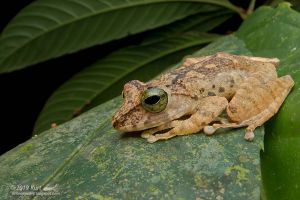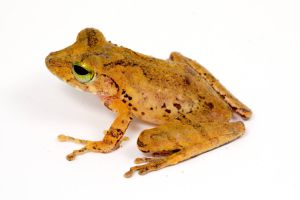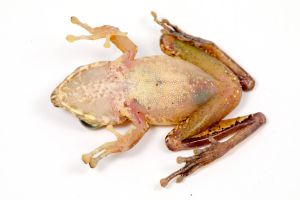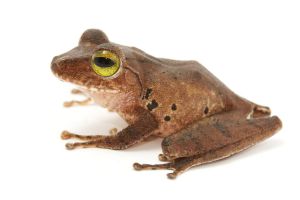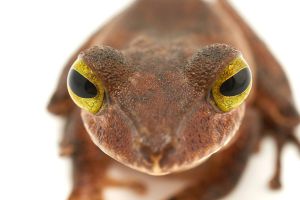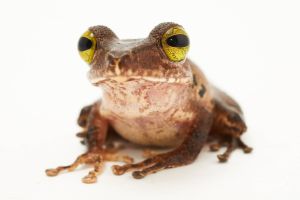
Frogs of Borneo

Frogs of Borneo

Frogs of Borneo

Frogs of Borneo

Frogs of Borneo

Frogs of Borneo

Frogs of Borneo

Frogs of Borneo

Frogs of Borneo

Frogs of Borneo

Frogs of Borneo
Bornean Families
Philautus:
hosii
The type locality of this species is the Patah River, North Sarawak. Philautus hosii inhabits primary and secondary lowland forests as well as hilly regions up to at least 900 m a.s.l. It is a quite unusual member of the genus and was, for a long time, placed within Rhacophorus. The species possesses a distinctive combination of traits that make it easy to recognize and difficult to confuse with other frogs.
It is a medium-sized species: males reach up to 49 mm and females up to 63 mm in snout–vent length (SVL). The snout is relatively long and sharply pointed. Fingers and toes end in large adhesive discs; the toes are almost fully webbed, whereas the fingers have only rudimentary webbing. The dorsal skin is finely granular or pebbled, and some slightly enlarged tubercles may be present on top of the eyes and along both sides in a line across the upper shoulder region, forming an open V. The eardrum (tympanum) is visible, though indistinct from the surrounding skin. A curved supratympanic fold runs from the eye to the arm. The heels lack calcar spurs.
The iris is yellow-gold to greenish. Dorsal coloration ranges from light to dark brown, sometimes reddish brown, with a dark X-shaped marking between the shoulders and small round black dots along the flanks in most specimens. The limbs often bear faint crossbars.
Calling males are found perched up to 4 m high in shrubs and trees. Inger and Stuebing (2005) reported finding eggs on vegetation overhanging streams, which they believed to belong to this species. Whether P. hosii has free-swimming larvae remains unknown. Inger et al. (2017) described the call as a series of six soft, squeaky notes followed by a short trill when the male is excited.
Version tracking
-
17.10.2025
updated

